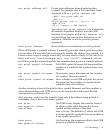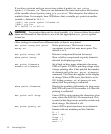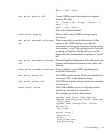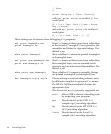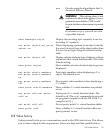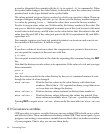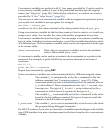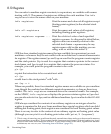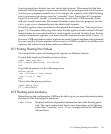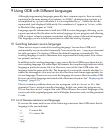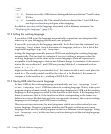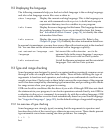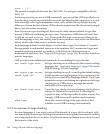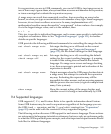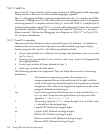Some registers have distinct raw and virtual data formats. This means that the data
format in which the register contents are saved by the operating system is not the same
one that your program normally sees. For example, the registers of the 68881 floating
point coprocessor are always saved in “extended” (raw) format, but all C programs
expect to work with “double” (virtual) format. In such cases, GDB normally works
with the virtual format only (the format that makes sense for your program), but the
info registers command prints the data in both formats.
Normally, register values are relative to the selected stack frame (see “Selecting a frame”
(page 73)). This means that you get the value that the register would contain if all stack
frames farther in were exited and their saved registers restored. In order to see the true
contents of hardware registers, you must select the innermost frame (with 'frame 0').
However, GDB must deduce where registers are saved, from the machine code generated
by your compiler. If some registers are not saved, or if GDB is unable to locate the saved
registers, the selected stack frame makes no difference.
8.11 Printing Floating Point Values
You can print the values of floating-point registers in different formats.
To print both single and double-precision values:
(gdb) info reg $fr5
fr5 (single precision) 10.1444092
fr5
To get the bit pattern, try the following macro:
define pbits
set *((float *) $sp)=$arg0
p/x *((int *) $sp)
end
This is what the macro produces:
(gdb) pbits $fr6
$1 = 0x4082852d
8.12 Floating point hardware
Depending on the configuration, GDB may be able to give you more information about
the status of the floating point hardware.
info float
Display hardware-dependent information about the floating point
unit. The exact contents and layout vary depending on the floating
point chip. Currently, 'info float' is supported on the ARM and
x86 machines.
8.11 Printing Floating Point Values 99



